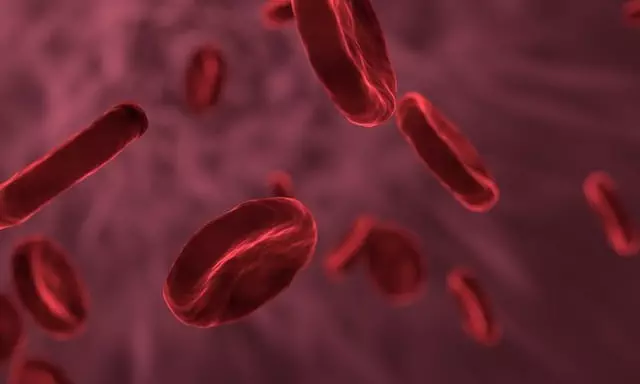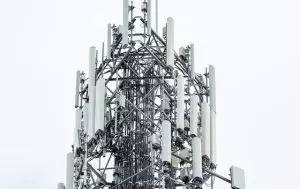Fat cell freezing (cryolipolysis) is a non-invasive treatment using cold temperatures to break down and eliminate stubborn fat cells, offering a safe alternative to liposuction with minimal downtime. It's ideal for problem areas like the abdomen, love handles, and thighs, providing permanent fat reduction when combined with a healthy lifestyle. The procedure involves targeted cooling and gentle suction, with potential side effects including redness, swelling, and bruising, but serious risks are rare when performed by licensed practitioners. Results show reduced overall fat content and a slimmer figure within weeks, best maintained through balanced diets and regular exercise.
“Discover how Fat Cell Freezing revolutionizes body contouring, offering a non-invasive solution for stubborn fat. This powerful technique targets problem areas with precision, providing effective results without surgery. Learn the science behind it, from understanding fat cell physiology to the step-by-step procedure. We’ll guide you through candidate eligibility, safety considerations, and post-treatment expectations, empowering you to make an informed decision about this game-changing approach to achieving a slimmer, more sculpted body.”
Understanding Fat Cell Freezing: A Non-Invasive Approach

Fat cell freezing, also known as cryolipolysis, is a non-invasive procedure that has gained popularity as an effective method for reducing stubborn fat. This innovative treatment works by targeting and freezing specific areas of fat cells, causing them to break down and be naturally eliminated from the body. Unlike traditional liposuction, which involves surgical incisions, fat cell freezing offers a minimally invasive approach with minimal downtime.
During the procedure, a specialized device is used to cool the targeted fat cells to sub-zero temperatures. This controlled freezing process induces lipolysis, where fat droplets are formed and subsequently removed by the body’s natural metabolic processes. The treatment is often considered as a game-changer for folks struggling with stubborn fat deposits that resist diet and exercise efforts, offering a safe and effective alternative for achieving a more sculpted appearance.
How Does Fat Cell Freezing Work? The Science Behind It

Fat cell freezing, also known as cryolipolysis, is a non-invasive procedure that targets and freezes stubborn fat cells. The science behind it involves using cold temperatures to induce a process called lipolyis, where fat cells break down and are naturally eliminated by the body. During the procedure, a specialized device delivers controlled cooling to specific areas, causing the fat cells to crystallize and eventually die. This targeted approach ensures minimal damage to surrounding healthy tissues.
Once the fat cells are frozen, they become unable to survive and are processed by the lymphatic system, which naturally removes them from the body over time. The result is reduced fat in the treated areas without the need for surgical incisions or extensive recovery periods often associated with traditional liposuction methods. This innovative technology offers a safe and effective solution for those looking to sculpt their figure and achieve their desired body contour.
Targeting Stubborn Fat: Where Fat Cell Freezing Is Effective

Stubborn fat cells, often located in specific problem areas like the abdomen, love handles, and thighs, can be particularly resistant to diet and exercise changes. Traditional weight loss methods may not yield significant results for these regions. This is where Fat Cell Freezing steps in as a non-invasive and effective solution. The procedure selectively targets and freezes these stubborn fat cells, causing them to break down and be eliminated naturally by the body over time.
Compared to surgical options, Fat Cell Freezing offers a less invasive approach with minimal downtime. It’s an ideal choice for individuals seeking a safe and permanent reduction in targeted fat areas without the risks associated with surgery. This method is particularly successful when combined with a healthy lifestyle, as it helps shape and sculpt your body, revealing a more defined and contoured silhouette.
Who is a Good Candidate for Fat Cell Freezing Treatment?

The Process: Step-by-Step Guide to Fat Cell Freezing Procedure

The process of fat cell freezing, also known as cryolipolysis, is a non-invasive treatment that targets and destroys stubborn fat cells. Here’s a step-by-step guide to understanding how it works:
1. Initial Consultation: Begin with a consultation where your healthcare provider assesses your medical history and determines if you’re a suitable candidate for the procedure. They will discuss your goals, review any potential risks or side effects, and answer any questions you may have.
2. Preparation: On the day of treatment, arrive at the clinic relaxed and prepared. Your practitioner will apply a cooling gel to the targeted area to enhance comfort during the process. A vacuum-like device is then placed on the skin to gently suction the fat cells, ensuring optimal contact with the cold energy.
Safety and Side Effects: What You Need to Know

Fat cell freezing, also known as cryolipolysis, is a non-invasive procedure designed to reduce stubborn fat. While it’s generally considered safe when performed by qualified professionals using appropriate equipment, like any medical treatment, it’s not free of potential side effects. Common temporary reactions include redness, swelling, bruising, and numbness at the treatment site. These usually subside within a few days to weeks.
Serious side effects are rare but can occur. They include infection, blood clots, nerve damage, and an adverse reaction to the anesthetic used during the procedure. It’s crucial to choose a reputable clinic with licensed practitioners to minimize these risks. Before undergoing fat cell freezing, discuss your medical history and any concerns you have with your healthcare provider.
Results and Expectations: What to Expect After the Treatment

After a successful Fat Cell Freezing treatment, patients can expect to see noticeable changes in their body composition within a few weeks. The freezing process selectively targets and destroys fat cells, leading to a reduction in overall fat content in the treated areas. Results may vary from person to person, depending on factors like initial body mass, lifestyle, and adherence to post-treatment instructions.
It’s important to remember that Fat Cell Freezing is not a weight-loss solution but rather a non-invasive way to reduce stubborn fat. Patients can anticipate a slimmer, more contoured appearance in the treated areas, enhancing their overall body shape. As with any medical procedure, there may be some temporary side effects like redness or swelling, but these usually subside quickly. Most individuals resume their regular activities shortly after treatment without significant downtime.
Maintenance and Follow-Up Care for Optimal Results

After successful fat cell freezing treatment, proper maintenance and follow-up care are crucial for optimal results. It’s essential to maintain a healthy lifestyle post-procedure, including a balanced diet and regular exercise, to support your body’s natural metabolism and assist in the elimination of targeted fat cells. Avoid extreme diets or intense workouts immediately after treatment as it may cause discomfort or negatively impact the healing process.
Regular check-ins with your healthcare provider are vital to monitor progress and address any concerns. They can guide you on post-treatment care, including skin care routines to enhance recovery and reduce potential side effects. Additionally, they might recommend specific supplements or treatments to optimize fat cell freezing results and ensure your overall well-being.
